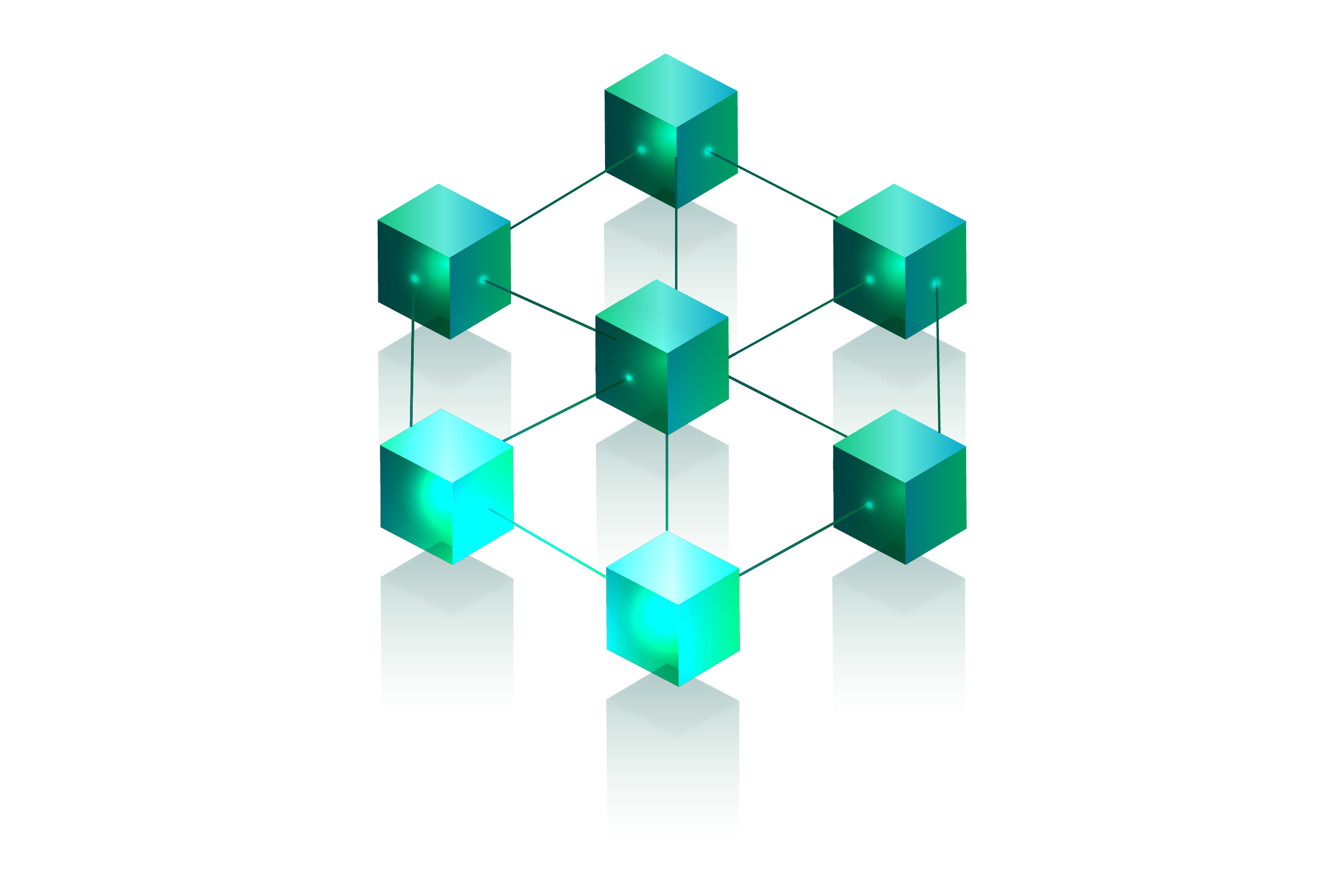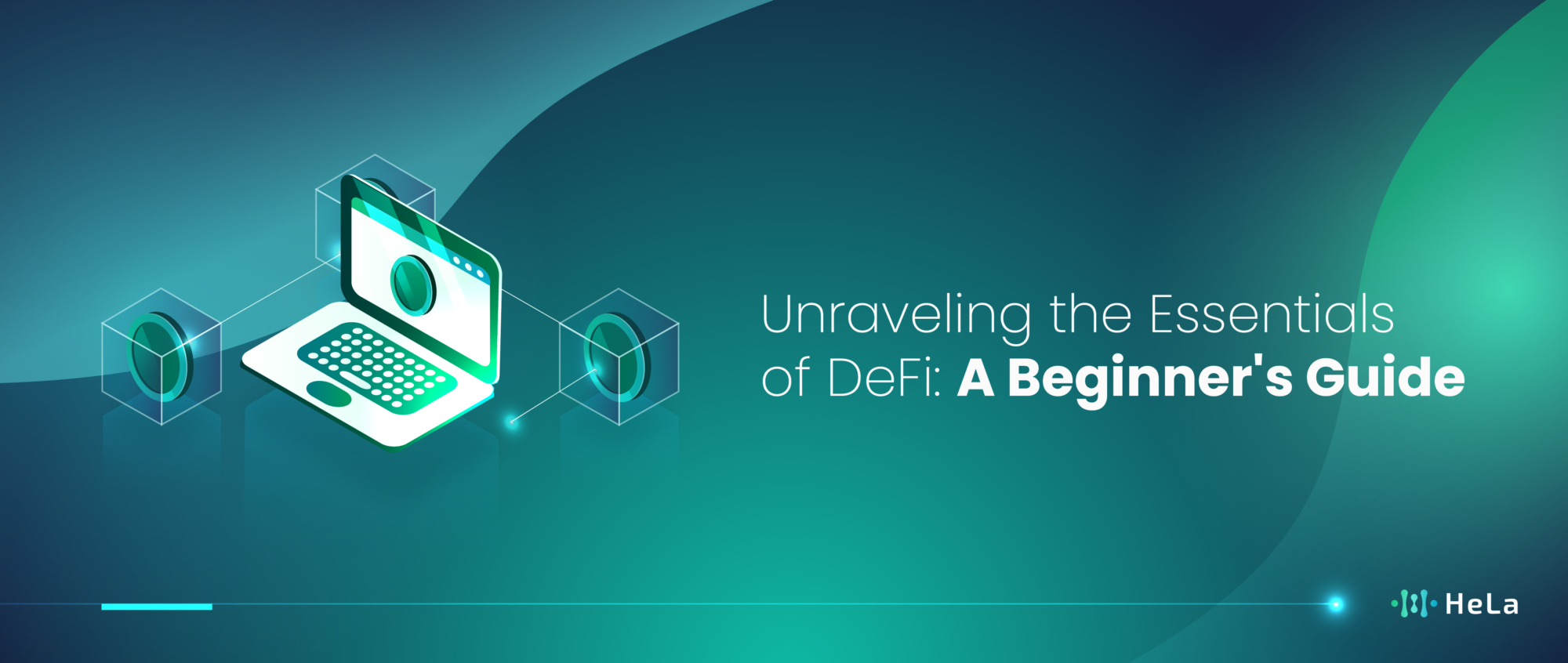The Decentralized Finance (DeFi) platforms provide trendy systems such as liquidity mining and yield farming that are aimed at encouraging users to engage in their protocols by providing liquidity and managing governance; thus, inventory growth and community involvement are due to these. The remuneration in yield farming protocols goes to people who lock assets in smart contracts or provide liquidity for DeFi platforms. The outcome is efficient capital utilization and liquidity provision. Meanwhile, users gain additional tokens or governance rights. Similarly, liquidity mining campaigns aim at attracting liquidity from users that is invested in decentralized exchanges or loan protocols, thus increasing the volumes in the market and shortening the time it takes to discover the prices.
The DeFi ecosystem is on the verge of a radical revolution as it moves from the old-fashioned financial system to a system that uses decentralized applications. This brings new possibilities for more people to have access to financial services as well as take control of their financial future. Through the mechanisms of distributed nature, openness, and equal opportunities, DeFi has great potential to remake the known financial world and fuel creative processes in these and other spheres. As we step into the realm of the Decentralized Finance (DeFi) revolution, I am sure that the voyage is thrilling and the directions are many, and I am safe in the knowledge that the influence is promising.
What is DeFi?

Decentralized Finance (DeFi) is coming out as a wonderful shift in economic history. This is ushering in the dawn of a new era in finance society where users no longer depend on banks but instead use blockchain technology to issue and deploy digital assets. In its core, though, DeFi encircles an entire ecosystem of operations on blockchain networks, with Ethereum being a widely-used component as it is robust in its smart contracts and appeals to their development community. This young ecosystem is characterized, among others, by decentralization, interoperability, and accessibility features, providing participants with a variety of financial services and opportunities that they could have previously only obtained from institutions involving traditional financing.
Probably no sphere of DeFi offers more opportunities for individual competence and sovereignty than DeFi does. Users are no longer comparison-minded and dependent on financial intermediaries, which are an integral part of a centralized world. Among the ways DeFi removes friction is through decentralized lending and borrowing platforms, where individuals can simply borrow and lend money (and thus capital and asset collateral) and collect interest on assets that wouldn’t exist without the huge red tape and discrimination typical within traditional banking systems. Besides, decentralized exchanges (DEXs) institutions, which have emerged as powerful platforms for peer-to-peer digit asset trading, have been enabled by aid (AMM)s and the use of liquidity pools to make trading activity seamless, permission-less and with little risk of any counterparty, plus market liquidity.
Also Read: Top 5 Layer 1 Crypto Projects Stand as Pillars of Innovation in 2023
However, the DeFi environment is filled with manifold algorithms, including yield farming, liquidity mining, and decentralizing autonomous organizations (DAO) for instance, that are used to provide and encourage participation, liquidity provision, and self-governance. The governance mechanism of yield farming protocols provides rewards for users to stake assets or offer liquidity to Decentralized Finance (DeFi) platforms, allowing investors not only to earn passive income but also to display their effectiveness through governance rights. Interestingly, liquidity mining efforts also reward people for providing liquidity on decentralized exchange or loan platforms, therefore encouraging the pooling of liquidity and making trading easier.
Furthermore, the design philosophy of DAOs (decentralized autonomous organizations) represents the governance principles of decentralization, which allow community members to jointly govern and direct DeFi collective processes transparently and democratically. Through the use of token-based voting mechanisms, DAOs provide the necessary medium whereby stakeholders may govern the proposed and voted protocol updates, fund allocation decisions and strategic initiatives; hence, the resultant avenue fosters community innovation, accountability and resilience.
The advent of DeFi means that traditional financial services are steadily altering, as evidenced by the appearance of an impartial and strong financial architecture whose development is aimed at a fair and dependable world financial infrastructure. The DeFi economy is constantly evolving and rolling towards maturity, and the power of freedom that it provides and offers to individuals is unmatched. This is what opens an unprecedented track for economic opportunities that leads towards an open and prosperous financial future for all.
The Key Components of DeFi

DeFi platform is an umbrella term covering all the sectors whose cooperation is responsible for the creation of the decentralized financial ecosystem. Acquiring these core elements is crucial for developing the vital skills required to successfully navigate and operate DeFi. Here’s a closer look at some of the primary elements:Here’s a closer look at some of the primary elements:
Smart Contracts
Smart contracts constitute the basis of DeFi, stomping out many manual processes in order to ensure the agreements are enforced automatically. Such autonomous contracts consist of contracts that, provided their conditions are met, are able to initiate various actions on their own, without the help of intermediaries. Smart contracts accomplish exactly that, as they do away with the need to trust centralized authorities, which leads to higher levels of transparency, efficiency and security.
As an example, in lending and borrowing platforms that fall under the same category, smart contracts stipulate the terms and conditions of loans, collateralization, and interest rates, and they ensure that the terms of the loan are adhered to and all the parties comply with the agreement without the presence of a mediator, which might be a bank or an attorney. Smart contracts are also capable of automating the execution process as well as the final settlement of complex financial instruments like derivatives and synthetic assets. Thus, the users can perform various monetary operations, such as lending or borrowing, directly and safely, where the third party is the individual code.
Decentralized Exchanges (DEXs)
DEXs utilize a number of trading models and mechanisms, such as automated market makers (AMM) and order book models, for the execution of trades, in which traders are matched instantly with other traders, eliminating the need for centralized control. These mechanisms, say, the AMM keep liquidity pools for molecules and provide algorithms for automatic pricing of token swaps. There are such well-known and actively developed DEXs as Uniswap and SushiSwap today that have already been established in the ecosystem of
Decentralized Finance (DeFi) gives users access to a huge selection of digital assets as well as new functionalities. However, even though DEXs turn out to be one of the most trendy alternatives to traditional CEXs, they still have liquidity issues, slippage, and impermanent losses to take into account, which requires constant improvement and optimization of the existing technology. Essentially, DEX businesses serve as a significant enabler in making financial markets accessible to the majority and accelerating the takeoff of Decentralized Finance (DeFi).
Lending and Borrowing Platforms
DeFi lending and borrowing platforms reinvent the usual and practical banking services, which, through the elimination of intermediaries, provide users with decentralized financial services. These operating systems enable users to rent their digital assets for the purpose of earning interest or borrow an asset only secured as collateral, with no contracts needed for that purpose.
Traditional financial institutions have always been the main providers of lending and borrowing services. However, blockchain-based lending and borrowing platforms are now emerging as superior alternatives due to the three benefits of blockchain technology, accessibility, transparency, and efficiency. Via global peer-to-peer lending and borrowing activity, which is carbon-free the users counter different geographical limits and lure high-interest rates.
Yield Farming and Liquidity Mining
Lending and borrowing opportunities are being used alongside the yield farming process to provide liquidity to many decentralized networks. In turn, this has ushered in yield farming as a new feature in the DeFi sector, which rewards users for providing liquidity to decentralized initiatives and protocols.
The act of yield farming is not different from lending/staking on specific DeFi protocols and earning, as a reward, additional tokens. These benefits are typically wallets that enable participation in governance; transaction fees or yield generated from lending protocols would all be examples. Liquidity mining encourages colones to add capital to a decentralized exchange or lending platform via the method of distributing more tokens, with extra tokens serving as the reward. Through the provision of liquidity, investors are able to ensure market efficiency, limit cost frictions on trades, and bolster the aggregate liquidity levels of DeFi platforms.
Decentralized Autonomous Organizations (DAOs)
Decentralized Autonomous Organizations (DAOs) which are an entirely new development in decentralized governance, are evolving into a self-sustaining ecosystem where decision-making and resource allocation are not centralized. DAOs are based on a blockchain-enabled smart contract format and run by the members, who form the community and make decisions collectively through a voting mechanism.
DAO in the DeFi space takes upon itself a key position in the governance of decentralized embedded systems, oversight of treasury funds, and coordination of updates to the protocols and improvements thereof. DAO members are generally viewed as voters who vote via their tokens, with their voting power proportional to the number of tokens they hold. In this way, DAO provides for a system that is democratic and transparent for the governance procedure.
Oracles
Oracle can be perceived as either a centralized or decentralized oracle, or through a decentralized oracle network. A family of oracles you could imagine—an oracle that depends on trusted third party data suppliers—is a single point of failure and centralization risk.
It can further be argued that, in comparison to the traditional oracles, which aggregate data from various sources, the decentralized oracles use a consensus mechanism that enables the validation and verification of the data. A decentralized oracle network enabled by nodes, such as Chainlink, is enabled by an ecosystem of node operators to check, send, and validate data to the smart contracts and makes oracles more secure, reliable, and resistant to regulatory barriers. In spite of their crucial roles, oracles also face a number of challenges, including manipulation of oracle data, oracle attacks and data quality control. Therefore, robust Oracle solutions and security measures are needed for DeFi protocols.
The Advantages of DeFi

Decentralized Finance (DeFi) is giving birth to a variety of benefits that are leading an evolution in the financial landscape and, for the first time in history, offering a level playing field where the availability of services is the only criteria for success. Realizing its advantages is the importance of the DeFi as a challenge for the next stage of revolution. Here’s a closer look at some key benefits:Here’s a closer look at some key benefits:
Accessibility
One of the basic perks of DeFi is that it has the highest accessibility into the financial services area for people all around the world, regardless of their race. The bar to independence from traditional banking prevents many people from accessing financial systems due to factors such as location, income level and even credit history.
These factors then exclude them or leave them to be merely the beneficiaries. In this way, DeFi nullifies these barriers by using blockchain technology, which ensures that any user who has an internet connection and a suitable wallet can access the system. Any region has an opportunity to embrace global financial markets and quickly obtain access to the latest financial products, which will help the general population cope with their own future.
Transparency
Transparency is a principle that lies at the heart of DeFi and is the underlying principle behind the decentralized nature and trustworthiness among the participants.
Contrast to unplant financial systems’ where transactions are usually not transparent and controlled by centralized authorities, DeFi transactions are recorded on public blockchains, hence transparency on fund flow and execution of smart contracts becomes visible. This proves the transparency of the system, as a monetary transaction can always be audited or reviewed by anyone having access to a synchronized copy of the blockchain.
Interoperability
Digital asset interoperability is a significant benefit of DeFi because it makes it possible for users to smoothly interact with various protocols, resources, and assets around the decentralized ecosystem. Instead of the traditional financial systems, which are stored in disconnected segments, DeFi protocols tend to be interoperable, making it possible for users to migrate their assets to different platforms and to other services.
This brings interoperability to the table, which allows innovation and composability to happen as a developer can simply build on the existing protocols and combine various DeFi applications, resulting in the evolution of new and more elaborate financial products. For illustration purposes, a user could collateralize sensitive information about their assets on one traditional DeFi lending platform and then use the resulting borrowed funds to provide liquidity on a decentralized exchange, without having to transfer assets between those different platforms at all.
Also Read: Top 10 Fastest Blockchain Platforms in 2024
Financial Inclusion
The financial inclusion aspect of DeFi is certainly represented in the fact that DeFi provides people with a viable alternative to the traditional financial system by giving them access to financial services that are available to everyone regardless of where they live, thus reducing the financial inequalities that once existed.
Our current banking system, designed in Decentralized Finance (DeFi), has witnessed a significant shift of the traditional financial system from a centralized to a decentralized approach, thus flipping the market system on its head and aiming for more inclusiveness, transparency, and efficiency. By means of blockchain decentralization, DeFi grants exceptional accessibility, transparency, exchangeability and financial inclusion to the world community, which has the impact of allowing individuals to initiate and manage asset reserves without the control of central authorities.
Conclusion
Decentralized Finance (DeFi) has emerged as a revolutionary force reshaping traditional financial landscapes, offering a paradigm shift towards a more inclusive, transparent, and efficient financial ecosystem. Through the utilization of blockchain technology, DeFi provides unparalleled accessibility, transparency, interoperability, and financial inclusion, empowering individuals worldwide to access and control their financial assets and participate in the global economy on their terms.
The fundamental concepts underlying DeFi, from smart contracts to decentralized exchanges and decentralized autonomous organizations, embody the principles of decentralization, autonomy, and community-driven innovation. By eliminating the need for intermediaries and leveraging blockchain technology, DeFi platforms offer users unprecedented autonomy and sovereignty over their financial activities, fostering trust, transparency, and resilience within the ecosystem.
Disclaimer: The information provided by HeLa Labs in this article is intended for general informational purposes and does not reflect the company’s opinion. It is not intended as investment advice or a recommendation. Readers are strongly advised to conduct their own thorough research and consult with a qualified financial advisor before making any financial decisions.


Pingback: How to Launch a Stablecoin? Avoid These Common Mistakes - HeLa